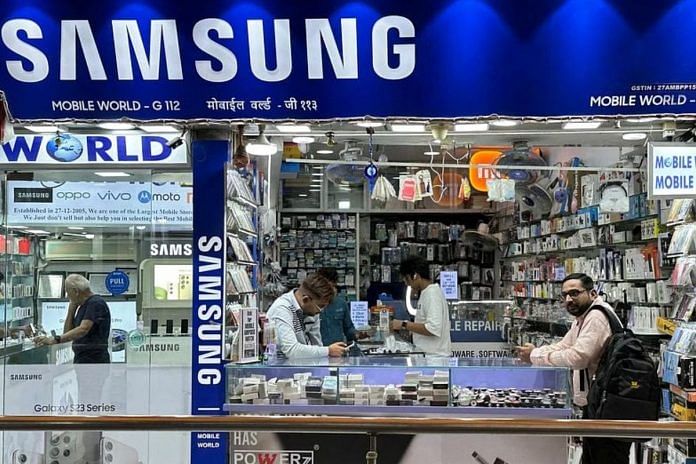Over the past year, the budget smartphone arena has undergone a remarkable transformation, driven by inflation and the growing ubiquity of 5G. Once dominated by Xiaomi’s Redmi line, the sub Rs 25,000 bracket now sees premium players like OnePlus and Samsung taking the lead. With both companies offering competitive 5G enabled options through their Nord and Galaxy M series respectively, the segment has never been more exciting. And Vivo’s recent foray into this space with its Series T also deserves an honorable mention.
One standout feature across these budget devices is their impressive battery life. The manufacturers have taken note of the increased demand for longer battery life that accompanies 5G connectivity, and designed their products accordingly. The OnePlus Nord CE 3 Lite, for instance, boasts a substantial 5,000mAh battery, paired with the Snapdragon 695 chipset. Despite being a year-old chip, it handles tasks efficiently, leading to above-average battery life that often extends into a second day. OnePlus has also equipped this phone with a 67-watt fast charging feature.
Battery and display
Vivo’s Series T2 5G, while slightly less powerful with a 4,500mAh battery and 44-watt fast charging, also offers a day’s worth of battery life, thanks to the use of the same Snapdragon 695 chipset. However, for those prioritising longer battery life, Samsung’s Galaxy M14 5G is the undisputed champion. This phone is equipped with a colossal 6,000mAh battery, which can last up to two full days. It utilises Samsung’s own Exynos 1330 chipset, made on a 5nm manufacturing node, and is paired with up to 6GB RAM. While not a gaming powerhouse, it offers dependable performance for the average user.
Display-wise, all three phones feature large screens. The OnePlus Nord CE 3 Lite stands out with a 6.7-inch IPS panel and a 120Hz refresh rate, ensuring a smoother user interface. Samsung and Vivo offer slightly smaller 6.6-inch displays. However, the Galaxy M14 lacks a high refresh rate, fast touch sampling, and comes with larger bezels, making its design appear outdated. On the positive side, the M14 is the only phone among the three to feature Corning Gorilla Glass 5, offering additional protection against accidental drops.
Also read: Google I/O shows search giant is feeling competition. Age of generative AI now more…
Camera
In the camera department, the Galaxy M14 and OnePlus Nord CE 3 Lite are neck-to-neck. Despite OnePlus’ 108-megapixel camera, both phones offer similar performance. Vivo, on the other hand, edges ahead due to its superior low-light photography capabilities. It should be noted, however, that none of these phones are particularly renowned for their camera prowess.
Design-wise, the OnePlus Nord CE 3 Lite is the most appealing, though its build is predominantly plastic. Similarly, the Vivo Series T2 and Galaxy M14 also feature a plastic build. The Galaxy M14 does feel somewhat bulky, owing to its large battery, while the Vivo takes the crown for the best build quality and slimness.
In terms of software, OnePlus’ Oxygen OS offers the cleanest experience, closely followed by Vivo and Samsung. However, Samsung arguably has a better track record when it comes to software updates. OnePlus also excels in multimedia, thanks to its dual stereo speakers.
For those seeking affordability, reliability, and impressive battery life, Samsung’s Galaxy M14, priced at Rs 14,999, is a strong contender. However, for a little extra, the OnePlus Nord 3 CE Lite offers a more balanced experience. Vivo, although strong in the photography department, is priced in a somewhat ambiguous range, making it less attractive as a sole choice for low-light photography.
The bigger point is that with inflation, the standard of phones that one gets for upwards of Rs 15,000 is decidedly lower than what we were getting only around 2020. You need to compromise – either buy into battery life or a little bit of performance. One thing is clear you can’t have both. And photography will be one feature that will be hobbled regardless of what you choose.
This is also the reason why the premium segment of the smartphone market has started to take off. Older phones that cost lesser perhaps are better than the newer models save for the addition of 5G. So for consumers, a true upgrade only comes in the form of upgrading to the premium segment which means buying something that is more than Rs 30,000. But if your budget is limited – then the OnePlus Nord 3 CE Lite, Vivo Series T2, and Samsung Galaxy M14 5G are the best bets – though you will need to choose between battery life, design, and performance.
Sahil Mohan Gupta is Editor, Technology at Acko Drive. Views are personal.
(Edited by Anurag Chaubey)



